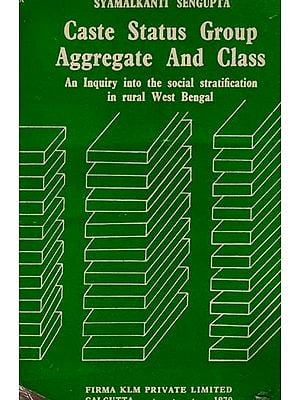Caste Status Group Aggregate and Class- An Inquiry into the Social Stratification in Rural West Bengal
Caste Status Group Aggregate and Class- An Inquiry into the Social Stratification in Rural West Bengal
Paperback
Couldn't load pickup availability
Book Description
Preface
This work offers an original perspective shaped by extensive fieldwork and a thorough review of literature on Indian castes and communities. My anthropological training began under the late Prof. T. C. Das at the University of Calcutta, who emphasized the importance of examining social facts without bias, independent of preconceived notions. This foundation allowed me to gain new insights into the stratification of rural populations.
This study is a unique contribution for several reasons: (i) it is the first to clarify the concept of caste in relation to status groups and class within the framework of social stratification, a topic traditionally dominated by sociologists; (ii) it explores status group aggregates, which are collections of certain castes and communities exhibiting similar lifestyles despite internal divisions; (iii) it focuses on stratification within rural agrarian societies, a neglected area in both anthropology and sociology; (iv) it examines traditional Indian society and its caste system, contrasting it with the changing urban landscape, while highlighting the need for comparative analysis between industrial and agrarian stratification patterns.
Introduction
India's villages represent the underdeveloped rural heart of the subcontinent, with over eighty percent of the population residing in these areas. The cultural landscape is largely shaped by village life, marked by diversity influenced by ecological settings, economic resources, village size, urban proximity, and demographic composition. However, this study specifically investigates the stratification patterns in two West Bengal villages: Kotaigarh in Midnapur and Benapur in Burdwan.
In these villages, people are classified into various Jatis (castes), Adivasis (tribes), and Sampradayas (religious groups). Villagers rank these Jatis hierarchically based on differentiated characteristics, creating a clear strata system. Both Kotaigarh and Benapur are predominantly Hindu villages, where the hierarchy is influenced by Hindu religious doctrine, placing Adivasis and Muslims in lower ranks. Thus, villagers identify their positions based on their caste, tribal affiliation, or religious group.
Additionally, the study notes how castes are grouped into status aggregates, and highlights the villagers’ affiliation with different agricultural categories or classes based on their roles in the agricultural system.
Share


